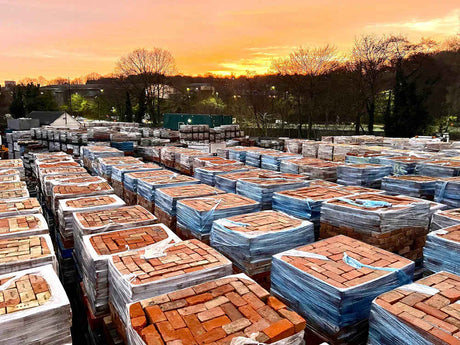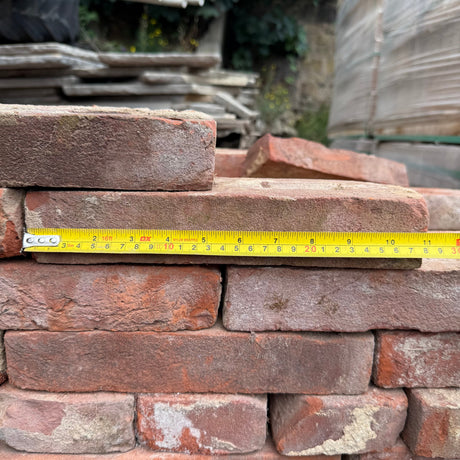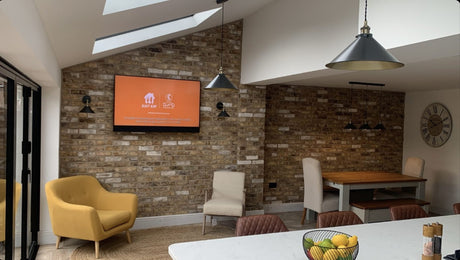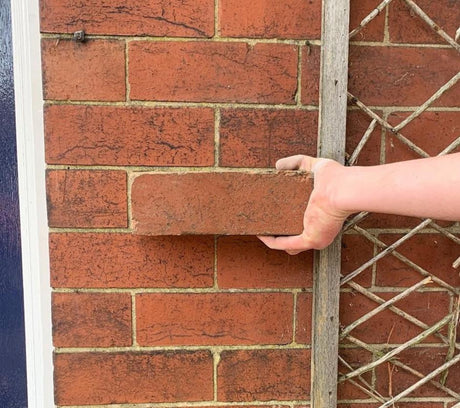Choosing the right materials for railway construction is crucial. Builders, architects, and contractors often wonder what is used to make railway sleepers that support the tracks so well.
These components are vital for the stability and durability of railways.
One interesting fact: hardwood timbers like oak are widely used due to their strength and resilience. This article will explore different types of wood used in making railway sleepers and how they contribute to a sustainable future in rail transport.
Discover about disused wooden railway sleepers and the process behind creating these essential parts of our train systems. Keep reading to find out more about wooden railway sleepers.
What Are Railway Sleepers and Their Uses?
Sleepers, or railway sleepers in certain locations, are fundamental in the construction and care of railway tracks. They're positioned horizontally beneath tracks to effectively hold rail lines in place, ensuring railway lines have both stability and the correct track gauge.
The development of these sleepers has progressed from initial trials using stone block sleepers to the present-day usage of various materials such as wood, concrete, and steel. Traditionally constructed from hardwood due to its resilience and strength, wooden sleepers continue to be favoured for their convenience regarding installation and their eco-friendliness.
Sleepers are essential elements that guarantee the safety and operation of railway systems.
Their functionality extends past bolstering train tracks; repurposed railway sleepers are given a new purpose in landscaping, building retaining walls, and crafting rustic furniture.
This reprocessing does more than just extend the lifespan of the old wood, it also helps to promote green practices by limiting waste. With a staggering 16 million wooden railway sleepers installed every year in Europe alone, their relevance extends from archaic railways to contemporary garden walkways, demonstrating their adaptability and continued importance in both commercial uses and within homes.
Definition and Function of Railway Sleepers
Railway sleepers, made from materials like wood and concrete, serve a critical role in rail construction. They lie horizontally under the tracks to hold rail lines in place. This supports the rails' weight and keeps them correctly spaced, ensuring trains move smoothly.
Wooden sleepers have been widely used due to their strength and flexibility.
Historically, railway sleepers were mostly made of hardwood or softwood, including types such as pine and eucalyptus marginata (Jarrah). The choice of wood affects the sleeper's durability and environmental impact.
In the more modern sleeper materials from railways, concrete, steel, and even recycled plastic have become popular due to their longevity and less environmental strain compared to traditional wooden sleepers.
Common Uses of Railway Sleepers
Railway sleepers play a critical role in construction and landscaping projects. They offer both functionality and aesthetic appeal to various applications.
-
Supporting railway tracks: Sleepers are laid horizontally underneath tracks to hold the rails at the right distance. This ensures trains can travel safely.
-
Garden landscaping: Homeowners and landscapers use railway sleepers for creating garden paths, edging flower beds, and constructing raised plant beds.
-
Building retaining walls: Contractors build strong retaining walls using sleepers to control soil erosion in sloped areas.
-
Constructing steps and staircases: In gardens with uneven terrain, sleepers serve as an ideal material for making durable outdoor steps.
-
Furnishing parks and public spaces: Benches, tables, and other street furniture made from railway sleepers add a rustic charm to communal areas.
-
Crafting unique interior designs: Architects and interior designers incorporate treated sleepers into ceilings, floors, and as feature walls in homes and commercial spaces.
-
Fencing solutions: Using sleepers as horizontal or vertical elements in fences creates sturdy barriers that withstand the elements.
-
Garden bridges over streams or ponds can be constructed from railway sleepers for a picturesque landscape feature.
After understanding these common uses of railway sleepers, let's understand the types of wood used to make them.

Historical Context and Evolution of Sleepers
The evolution of railway sleepers has been significant since the first tracks were laid. Initially, builders experimented with stone block sleepers, but these proved less than ideal for flexibility and ease of installation.
Wooden sleepers soon became the norm due to their availability and the straightforward nature of working with timber. By the 19th century, as rail networks expanded across Europe and America, wooden sleepers dominated railway construction.
They offered an excellent balance between cost-effectiveness and performance.
Over time, advancements in materials science introduced new contenders like concrete and steel into the sleeper market – 16 million wooden sleepers are laid every year, yet experiments continue with materials that promise greater durability or environmental benefits.
Despite this diversity, wood remains a popular choice given its renewable nature and lower carbon footprint compared to alternatives.
Railway sleepers have evolved from basic stone blocks to sophisticated engineered products designed for maximum efficiency.
Exploring how these traditional elements are crafted helps us appreciate the blend of heritage and innovation in modern railway infrastructure.
What Types of Wood Are Used to Make Railway Sleepers?
Railway sleepers made from wood use both hardwood and softwood, depending on the requirements for durability and strength. Hardwoods such as oak and jarrah are highly valued for their resilience and long life.
These types can withstand heavy loads, making them ideal for supporting railway tracks. On the other hand, softwoods like pine are treated with preservatives to enhance their resistance to decay and pests.
This treatment extends their usable life significantly.
Choosing the best kind of wood for new sleepers depends on several factors including environmental conditions and expected load. For instance, Lophira alata, commonly known in some regions as Azobé or Ekki, offers exceptional durability against harsh weather conditions without requiring chemical treatments.
In areas where these woods are available locally—like Africa or Australia—they often become the preferred choice due to lower transportation costs and better sustainability profiles compared to imported timber options.
Overview of Timber Varieties
Timber serves as a primary material for railway sleepers, with hardwood and softwood being the two main categories. Hardwoods like oak and jarrah are renowned for their durability and strength, making them ideal choices for timber sleepers in this application.
These woods withstand heavy loads and resist wear over time, which is crucial given the demands placed on sleepers. Softwoods, whilst not as tough as hardwoods, offer benefits such as easier workability and lower cost.
They're often used in less demanding settings or where budgets are tighter.
Manufacturers select wood based on factors like density, resistance to decay, and availability. Oak has been a preferred choice in the United Kingdom due to its strength and longevity.
Meanwhile, countries with access to tropical hardwoods might opt for jarrah or azobé because of their natural resistance to pests and rot. Each type of timber brings unique characteristics to the table, influencing how railway sleepers perform under various conditions across the globe.
Hardwood and Softwood for Railway Sleepers
Hardwood and softwood serve as the key materials for making railway sleepers. Hardwoods, sourced from trees like oak and jarrah, are celebrated for their durability and strength. These characteristics make them ideal for use in most railway sleepers made today.
Oak, known for its toughness, has been a preferred choice historically due to its ability to withstand heavy loads and resist wear over time.
On the other hand, softwoods like pine are commonly used where cheaper alternatives are needed. Treated with preservatives such as creosote or copper-chrome-arsenate, these softwoods can resist decay and pests, extending their life span when used as sleepers beneath tracks.
Despite being less durable than hardwoods, treated softwoods offer a cost-effective solution for many railway applications.
Best Wood Types for Durability and Strength
Oak and jarrah woods stand out for their durability and strength, making them top choices for railway sleepers. These types of wood withstand the weight of trains and resist wear from weather conditions effectively.
Oak has a significant history in the industry, its strength suited for bearing heavy loads on railway tracks. Jarrah is notable for its exceptional resistance to decay and pests due to its dense grain structure.
Utilising oak or jarrah wood for railway sleepers ensures endurance and sturdiness beneath the tracks.
These hardwoods have caught the interest in construction spheres, serving purposes beyond railways, including garden fences and utility poles due to their resilience. Considering wood such as oak requires 80-100 mature trees per mile of track, choosing sustainable sources is key.
Architects and builders favour these materials for projects needing high strength mingled with environmental consciousness.

How Are Wooden Railway Sleepers Made?
Crafting wooden railway sleepers involves a detailed process to ensure their durability and strength. This operation uses specific types of wood and undergoes various stages before the sleepers are ready for installation.
-
Selecting the Wood: The first step is choosing the right type of wood. Hardwoods like oak are generally preferred because they offer greater durability and resistance to wear.
-
Cutting the Timber: Workers cut the selected logs into rectangular blocks, matching the size needed for sleepers.
-
Seasoning the Wood: To remove moisture, the timber blocks are air-dried for several months or kiln-dried for a shorter period. This step prevents shrinkage and warping.
-
Shaping Sleepers: Once dried, the timber is cut precisely into sleeper shapes using saws.
-
Treating with Preservatives: To protect against rot, fungi, and insects, sleepers are soaked in preservative chemicals like creosote or copper-chrome-arsenate.
-
Quality Control: Each sleeper undergoes inspection to ensure it meets specific standards for size, shape, and treatment effectiveness.
-
Preparing for Rail Fittings: Finally, holes are drilled into sleepers at measured points to fit rail spikes or clips, making them ready for laying on tracks.
This manufacturing process highlights how careful attention to detail ensures that wooden railway sleepers serve efficiently underneath tracks holding rails in place across various mixtures of raw materials found in railway environments.
Manufacturing Process for Wooden Sleepers
The manufacturing process for wooden railway sleepers begins with selecting the right type of wood. Hardwoods, due to their durability and strength, are often the choice for sleepers used on heavier tracks.
Workers cut the timber into planks of a specific size, which varies depending on where it will be installed underneath tracks to hold rails railroad ties in place. Each sleeper requires careful treatment to resist decay and pests.
This involves soaking them in preservatives such as creosote or using more environmentally friendly alternatives that increase their lifespan.
After treatment, these sleepers are ready for distribution and use across the railway network. The selection of wood plays a crucial role in ensuring the quality and longevity of sleepers; thus, manufacturers often opt for hardwood varieties like oak or jarrah that can withstand heavy loads and harsh weather conditions.
With advances in preservation techniques, wooden sleepers have become more resistant to environmental threats, making them a viable option for sustainable construction within the railway industry.
Factors Affecting Quality and Longevity
Various elements are critical in deciding the standard and endurance of wooden railway sleepers. The choice of wood is a prominent aspect. Hardwoods, which are frequently used for railway sleepers, have a longer lifespan due to their solid structure that provides improved defence against decay.
However, it is crucial that the chosen hardwood species are inherently stable or suitably treated to resist weathering, insects, and fungal invasions.
Manufacturing procedures also influence sleeper endurance. Sleepers immersed in coal tar creosote obtain an added shield of protection against environmental pressures, notably prolonging their lifespan.
This treatment technique has been extensively utilised following the establishment of the Zollamt Bridge tracks. The moisture content at the time of installation further impacts durability; overly damp wood can instigate premature rotting once positioned on rail beds.
For every mile of wooden tracks laid down, approximately 810 mature oak trees are necessitated.
Environmental contemplations in selecting wood for new railway sleepers also presently involve sustainability practices such as recycling and adopting reclaimed railway sleepers where feasible.
Such practices lessen the demand for untouched timber and also notably reduce waste in construction ventures.
Environmental Considerations in Wood Selection
Selecting the ideal wood for railway sleepers entails more than merely evaluating strength and endurance. It's also crucial to consider the environmental implications. The production of wooden railway sleepers necessitates an intricate balance to ensure sustainability.
To avert deforestation and habitat disruption, sustainable forestry practices should be a principal consideration in lumber sourcing for sleepers. Preferred are woods originating from forests managed with sustainability, assuring their preservation for future generations.
Preservative selection is equally crucial to safeguard sleepers against decay while lessening environmental harm. In the past, sleepers underwent a treatment process with coal tar creosote, a method that caused worries due to its toxicity and potential harm to wildlife and water sources.
Nowadays, the industry aims to use less harmful alternatives as wood treatments, which diminishes environmental impacts without sacrificing sleeper quality or efficiency. This initiative propels the move to use reclaimed materials when feasible, demonstrating a transition to more ecological railway infrastructures.
What makes wooden railway sleepers favourable over other materials? This inquiry leads our subsequent discussions to understand their benefits when compared with concrete and steel alternatives.

Why Use Wooden Railway Sleepers Over Other Materials?
Wooden railway sleepers present a distinctive combination of endurance, robustness, and eco-friendliness, surpassing other materials like concrete and steel. Their production necessitates 810 mature oak trees, highlighting their natural origins.
Professionals in architecture and building appreciate them for their exceptional versatility in blending with multiple landscapes. Contrary to concrete or steel sleepers, wooden ones contribute aesthetically while preserving the railway tracks' structural integrity.
When cost-effectiveness is in question, these untreated timber sleepers have a leg up compared to concrete or steel alternatives. The process of substituting old sleepers with timber ones proves to be faster and more simplified, positioning them as the preferred choice for time-bound projects.
More so, reused wooden sleepers take sustainable construction practices a notch higher by reutilising materials resourcefully. This practice decreases waste while presenting an eco-friendly substitute in the sleeper market, which is appealing to builders and homeowners with a green outlook.
Advantages of Wooden Sleepers
Wooden sleepers offer several benefits over their concrete and steel counterparts, making them a popular choice for railway tracks. They provide excellent damping properties, reducing the vibrations caused by passing trains.
This feature extends the lifespan of the rail infrastructure, ensuring smoother rides and lower maintenance costs. Wooden sleepers are also known for their flexibility under heavy loads, adapting to changes in temperature and weight distribution better than concrete or steel.
Wooden sleepers have captured the interest of the railway sleeper market due to their durability and environmental friendliness.
Moreover, they pose less of an environmental impact compared to other materials. The production process for wooden sleepers generally uses less energy and emits fewer carbon dioxide emissions.
When it's time for replacement, wooden sleepers can be recycled or repurposed in various construction projects or as fuel. Their natural appearance blends seamlessly with outdoor landscapes, making them a preferred choice not just for railways but also for landscaping projects around yards and gardens.
Reclaimed and Treated Wooden Sleepers
Recovered and treated wooden sleepers present a sustainable choice for rail infrastructure and landscaping efforts. They undergo rigorous processes to ensure their resilience to weather and pests.
These sleepers have been steadily recognised as they find use in gardens, parks, and even residential settings. Their eco-friendly attributes stem from the fact that recycling wood reduces the need for cutting down new trees.
This strategy saves forests while also providing architects, builders, and homeowners an opportunity to blend historical charm into contemporary designs. It's consistent with increasing trends in favour of sustainability in construction materials.
This reuse of materials is a wider initiative in the construction industry that explores inventive ways to minimise waste.
What Are the Modern Alternatives to Wooden Railway Sleepers?
Concrete sleepers have emerged as a favoured option over their horizontal wooden sleepers counterparts due to their extended longevity and enhanced support for tracks, particularly for high-speed trains.
Sleepers made from cast concrete slabs enjoy widespread usage in railways globally owing to their inherent durability and strength.
Presently, steel sleepers are another preferred option, performing well under heavy-load conditions. They hold up well against corrosion and maintain alignment superiority over wood or pre stressed concrete sleepers.
Fresh advancements have led to the creation of composite sleepers that amalgamate materials such as plastic bag waste, natural rubber, and construction aggregate. These composite variants are impressive in their strength and contribute to environmental conservation by utilising recycled materials.
These new alternatives represent a strong evolution in railway infrastructure, fulfilling current necessities for sustainability and efficacy.
Concrete Sleepers: Pros and Cons
Railway sleepers crafted from prestressed concrete have risen to prominence due to their durability and strength. Unlike wood, concrete is impervious to rot or termite attacks, guaranteeing extended lifespan for railway tracks.
These sleepers possess the capability to endure heavier loads, positioning them as the perfect choice for high-speed railways and heavily trafficked lines. They are typically cast as a single entity with built-in fittings to hold the rails, simplifying the track assembly procedure.
Nonetheless, concrete sleepers carry certain drawbacks as well. They pose a considerably higher weight than wooden ones, which renders their transport and installation more complex without specialised machinery.
This factor escalates the total cost of railway projects. Moreover, in contrast to wooden sleepers, they offer less adaptability under load, potentially causing a stiffer ride on tracks that aren't perfectly aligned.
The inflexibility of concrete also infers it may fracture under excessive stress or due to freeze-thaw cycles in colder climates.
Steel Sleepers and Their Applications
Moving from the pros and cons of concrete sleepers, steel sleepers present an intriguing alternative in railway construction. Architects and builders often select steel sleepers for their exceptional durability and resistance to corrosion.
These benefits stem from the fact that they're generally made from cast concrete or recycled materials, making them a sustainable choice for modern infrastructure projects.
Steel sleepers have seen wide application across various environments, including those prone to severe weather conditions. Their design allows for quick installation on tracks, which significantly cuts down on labour time and costs.
This efficiency has led to their use in major rail networks around the world. For instance, past experiments with stone block sleepers evolved into today's more advanced steel versions used on both heavy freight lines and high-speed passenger routes.
With steel ties having been removed from tracks after showing remarkable endurance, it’s clear why many favour this material over traditional wood or even concrete alternatives in certain contexts.
Composite Sleepers: Innovation in Railway Infrastructure
Composite sleepers are the newest trend in railway infrastructure, presenting an alternative to the conventional wooden, concrete, and steel options. These sleepers fuse various materials, including recycled plastics and rubber from tyres, rendering them highly sustainable.
Their advent in the market mirrors an escalating interest in green solutions within the construction industry. Composite sleepers are not simply lighter than concrete but also exhibit greater durability than wood, which eases their handling and installation.
These innovative sleepers possess numerous benefits over their counterparts. For example, they withstand rot and insect damage without needing environmental damaging chemical treatments.
Equally important is their capacity to absorb shock more effectively than concrete sleepers whilst supporting heavy loads efficiently. This blend of attributes has guided the growing use of composite sleepers on railways globally, signalling a notable transition to more sustainable construction methods in this industry.
What is the Future of Railway Sleepers?
The future for railway sleepers appears promising, with sustainable and innovative materials at the forefront. Upcoming tendencies suggest the use of recycled plastics and state-of-the-art composite materials competent in bearing weighty loads just as efficiently as conventional wood, steel, or concrete sleepers.
These advanced sleeper types are not just lighter, but also resilient to corrosion, establishing them as a revolutionary change for present-day railway infrastructure.
Technological progression is instrumental in shaping this future. Manufacturers now employ computer-aided design for creating sleepers that conform to diverse track requirements while endorsing environmental sustainability.
This alteration is paramount in view of the escalating apprehension over deforestation and the carbon footprint related to the production of concrete and steel sleepers. Moving ahead, we can anticipate an increased uptake of these environmentally-friendly alternatives promising durability and reduced maintenance over time.
Emerging Trends in Railway Sleeper Materials
The latest materials used in sleepers are redefining our traditional expectations from railway sleepers. Encouraging innovations in composite materials, for instance, provide a sight of the rail infrastructure's future.
These composites, composed of different blends including repurposed plastics and fibreglass, propose superior durability compared to conventional wood or concrete sleepers. Their corrosion and decay resistance, coupled with their resilience against severe weather conditions, validates their suitability for railways across diverse conditions.
Technological improvement has also directed to more environment-friendly methods in railway sleeper industry and production. As an instance, current railway sleepers typically utilise materials that minimise environmental harm, like recycled wood or less energy-demanding manufacturing processes.
This alteration caters to sustainability issues, meeting the proliferating request for environment-friendly construction materials among architects, builders and designers. Railway sleepers have gone beyond being just functional components of railway track and infrastructure; they are now indicative of a shift to a greener and more innovative utilisation of materials in the sector.
Technological Advancements in Sleeper Manufacturing
Keeping abreast of the latest trends in railway sleeper materials, the rising tide of technology is reshaping how sleepers are produced. Modern equipment and procedures pave the way for greener production methodologies.
Producers utilise less energy and resources than any time in the past. For example, fresh railway sleepers can be produced from diverse blends including recycled plastic and rubber from utilised tyres.
This method diminishes waste while also augmenting the life duration of railway sleepers past that of traditional wood or even concrete.
Producers have also evolved strategies to fortify sleepers with rebar or steel ties, amplifying their durability without a notable escalation in weight. In regions like Russia and Victoria (state), these advanced sleepers persist in harsh weather conditions better than their prior versions.
Further, such innovations have triggered the installation of composite sleepers on tracks at crucial points like Manchester Victoria station where endurance and resistance against corrosion and rail operators are imperative.
These strides in modernisation underline a significant transition towards efficiency, resilience, and environmental responsibility in sleeper manufacturing.
Sustainability and Environmental Impact
The future of railway sleepers contemplates sustainability and environmental repercussions. Contemporary modern sleeper materials and components, like those crafted from predominantly reused elements, illustrate a shift embracing environment-friendly substitutes.
The creation of sleepers needs considerable amounts of timber; for example, the manufacture of railway sleepers can consume 810 mature oak trees. This predicament has impelled the industry to discover alternatives that have minimal environmental impact.
Emerging tendencies in railway sleeper elements involve utilising concrete on lighter tracks and steel ties removed equivalent sleeper, after rail seats incurred damage. These adjustments reveal a rising concern about the utilisation of resources in sleeper manufacturing.
Innovations like composite sleepers signify a noteworthy improvement by merging endurance with a more environment-friendly profile, indicating that the pursuit for sustainable resolutions is revolutionising the railway sleeper market.
Conclusion
Railway sleepers, crafted from wood, offer both strength and durability. They play a crucial role in our railways' foundation. Choices between hardwood sleepers and softwood depend on the specific needs of the railway system.
These sleepers undergo a detailed manufacturing process focused on ensuring their longevity and quality. Environmental factors also significantly influence the selection of wood for these essential components.
Reflecting on this knowledge empowers us to appreciate the intricacies behind constructing resilient rail networks that stand the test of time.








